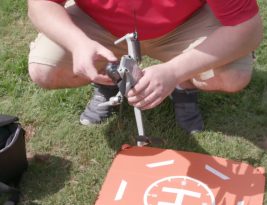Today, we’re featuring an excerpt from the Pilot’s Handbook of Aeronautical Knowledge (FAA-8083-25).
Most aircraft are equipped with either a 14- or a 28-volt direct current (DC) electrical system. A basic aircraft electrical system consists of the following components:
- Alternator/generator
- Battery
- Master/battery switch
- Alternator/generator










